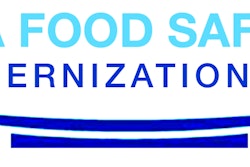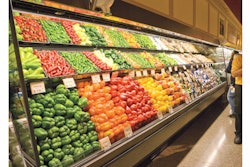
New Food and Drug Administration (FDA) rules mandated by the U.S. Food Safety Modernization Act (FSMA) are forthcoming for the transportation of food. The FSMA represents the most significant expansion of food safety requirements and FDA food safety mandates since the original enactment of the Federal Food, Drug, and Cosmetic Act (FD&C) Act of 1938. The FSMA grants the FDA a number of new powers, including mandatory recall authority, which the agency has sought for many years. The FSMA requires the FDA to undertake more than a dozen rule makings and issue at least 10 guidance documents, as well as a host of reports, plans, strategies, standards, notices, and other tasks.
The law requires the FDA to implement, in part, the Sanitary Food Transportation Act of 2005 and to promulgate regulations requiring shippers, carriers by motor vehicle or rail vehicle, receivers, and other persons engaged in the transportation of food to use sanitary transportation practices to ensure that food is not transported under conditions that may render food adulterated. FSMA § 111, 124 Stat. at 3916 (amending 21 U.S.C. § 350e).
The following key elements are likely to be in play during the rule-making process for the Sanitary Food Transportation Act. These elements have not yet been finalized, but there is a strong chance that they will be part of the rule that food handling companies will be expected to follow.
Temperature Monitoring and Control
- Improper refrigeration or temperature control of food products (temperature abuse).
Cross Contamination
- Improper management of transportation units or storage facilities to preclude cross-contamination, including improper sanitation, back hauling hazardous materials, improper disposal of wastewater, etc.
- Segregating food and non-foods in the same trailer/container/railcar to minimize the potential risk of cross-contamination from nonfood items.
Sanitation
- Improper packing of transportation units or storage facilities, including incorrect use of packing materials and poor pallet quality.
- Improper loading practices, conditions, or equipment, including improper sanitation of loading equipment, not using dedicated units where appropriate, inappropriate loading patterns and transporting mixed loads that increase the risk for cross contamination.
- Improper unloading practices, conditions or equipment, including improper sanitation of equipment and leaving raw materials on loading docks for extended periods of time.
- Trailer/truck washing requirements.
- Food sanitation procedures for air and equipment surface contacts.
Training
- Training management and employees on the basics of food safety.
Validation
- Environmental monitoring programs to verify effectiveness of pathogen controls in processes where food is exposed to a potential contaminate in the environment.
- Supplier verification that relate to food safety.
Food Safety Plan
- A food safety plan that is documented and being followed.
- Current good manufacturing practices (GMPs).
Revisit Your Plan To Ensure Compliance
Although the final rules are unlikely to be exactly the same as the proposed rules, there is no time like the present to revisit your transportation and logistics food safety program and to get a head start on the forthcoming rules and regulations.
The opportunity to take action is now for those who are likely to be impacted directly or indirectly by the Food Safety Modernization Act and the Sanitary Food Transportation Act. The industry has a golden opportunity to help shape the very rules that will govern their food transportation operations and impact their success and bottom line.
Patrick Brecht, Ph.D., president of P.E.B. Commodities, Inc. in Petaluma, Calif., provides services for managing perishable food. Portions of this article were included in an advisory Dr. Brecht wrote for the Global Cold Chain Alliance.

















